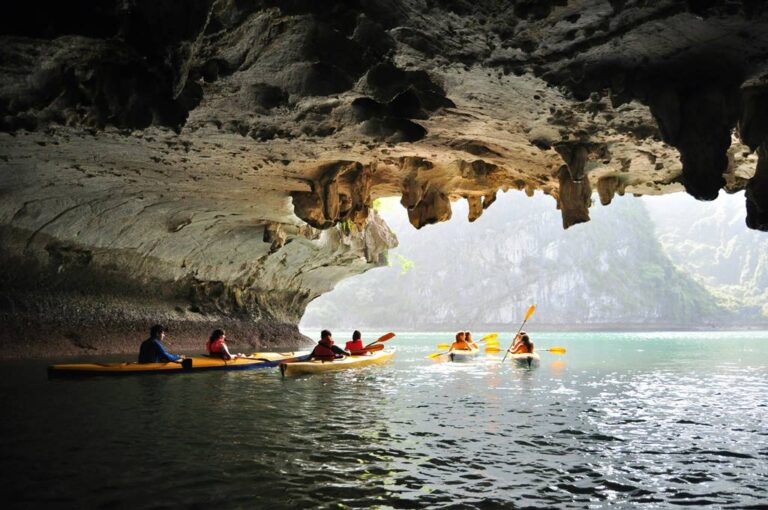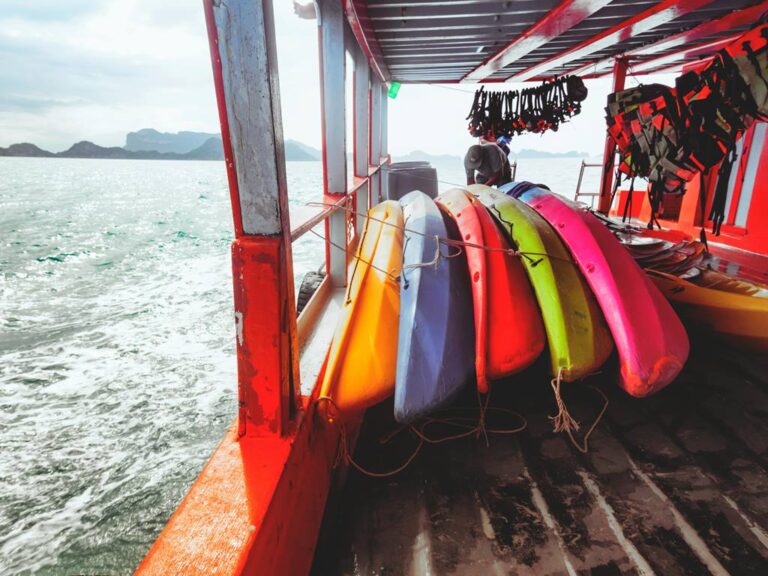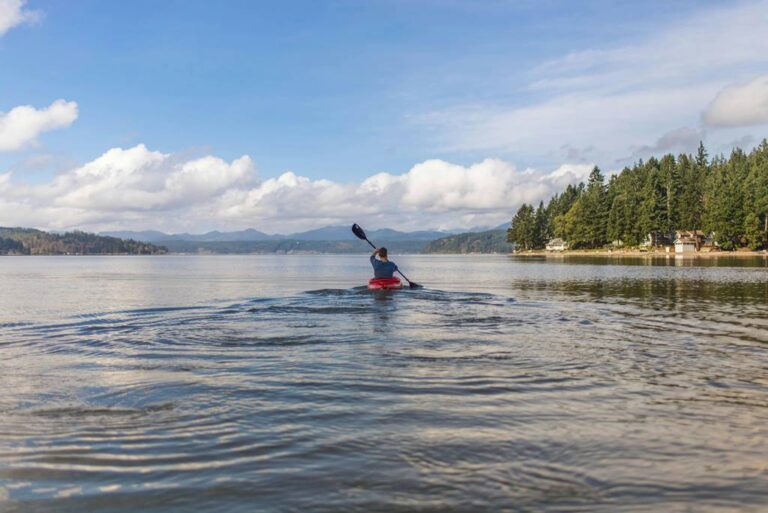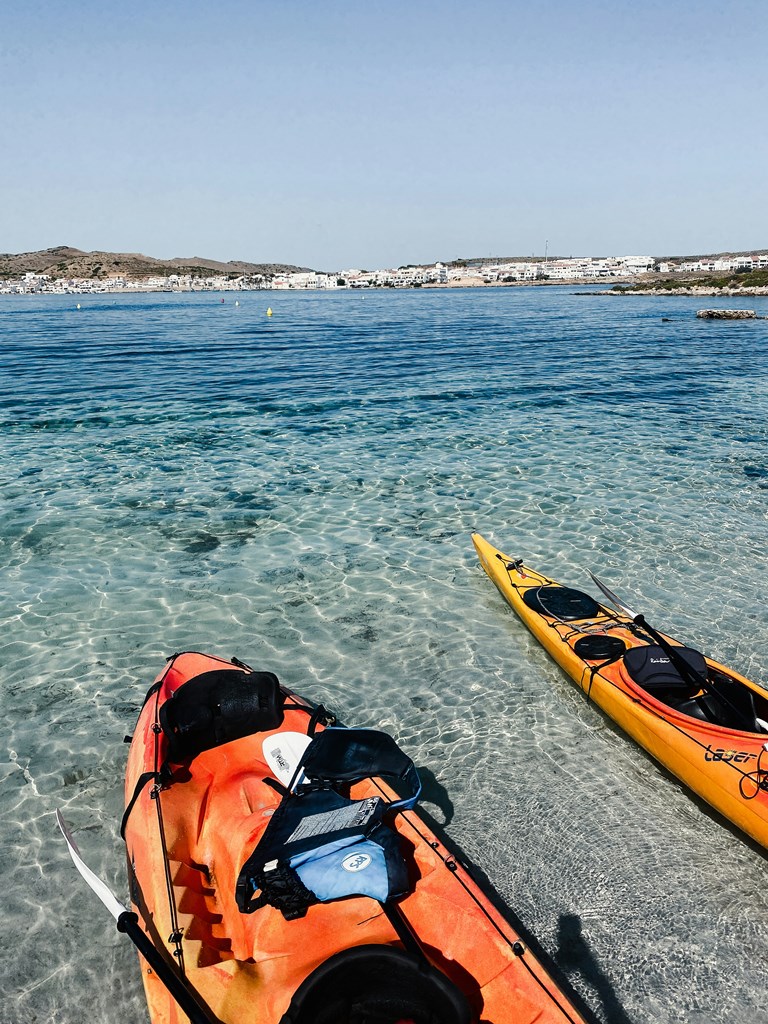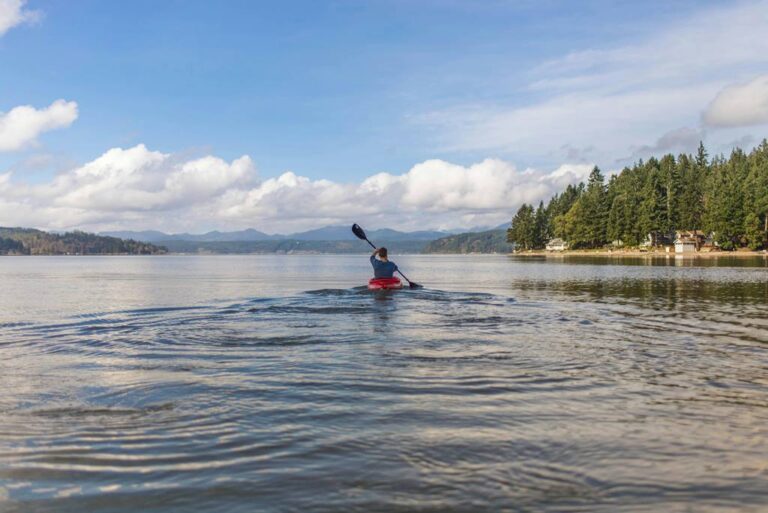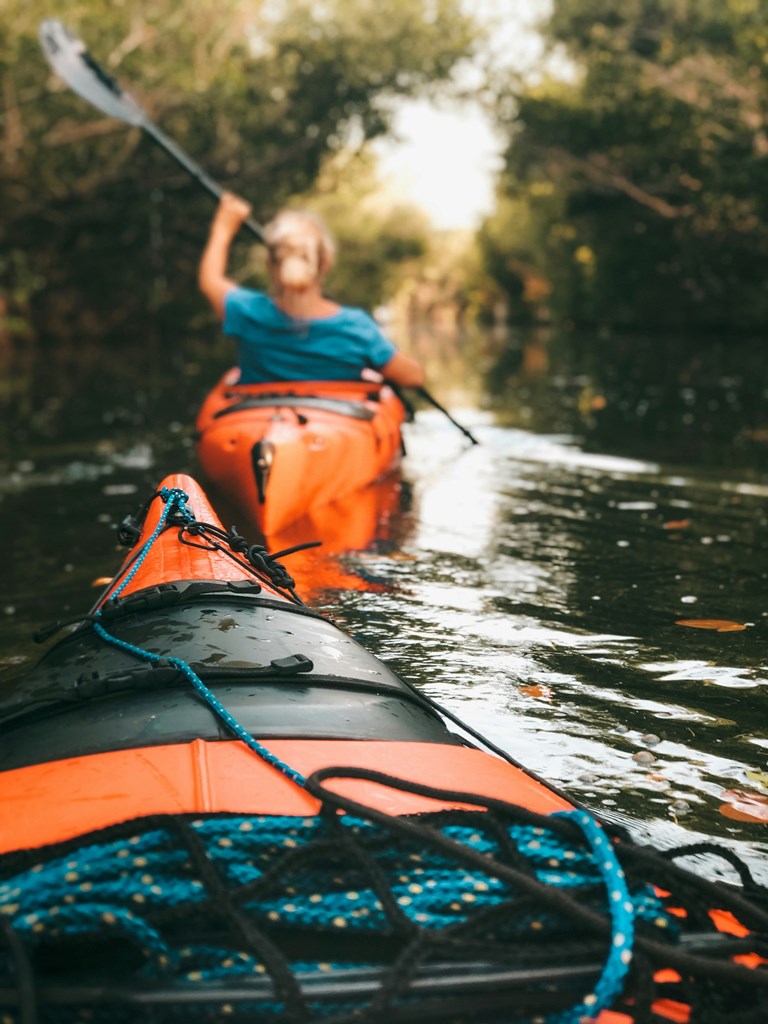
It’s normal to wonder, “How safe is kayaking?” Generally, kayaking isn’t particularly dangerous, but as with any water sport, accidents can happen. However, many of these accidents can be avoided, so there’s no need to be scared.
When trying a new activity, especially a water sport, it’s natural to think about the risks. The idea of kayaking might seem intimidating for a newbie. Even though it’s a popular sport, many people still don’t know much about it.
Table of Contents
What are the Risks of Kayaking
In kayaking, there are two types of risks: perceived and real. Perceived risks are what you imagine might happen, but they often aren’t real. For example, kayaking on a small, calm lake isn’t as dangerous as it might seem.
Real risks are the actual dangers you could face while kayaking. Here are some of the most common ones.
Top Kayaking Hazards and How to Avoid
Collisions
Sometimes, you have to share the water with others, including motorboats. Kayaks are small and quiet, making them hard to see, especially in open water. Boats, ferries, and jet skis pose two main threats to kayakers.
First, big boats create large waves that can flip your kayak. If you’re not a strong swimmer or can’t right your kayak, this can be dangerous. Even if you are experienced, you risk hitting something when you fall.
Second, motorized boats can accidentally hit your kayak. Such a collision could be very serious.
To stay safe in busy waters, make sure you’re visible. Wear bright clothes so others can see you easily. At night or in low visibility, attach lights to your kayak.
Also, steer clear of motorized boats. You can see them easily, but they might not see you until it’s too late to avoid a collision.
Dehydration
When thinking about kayaking risks, dehydration and fatigue might not top your list, but that’s what makes them even more dangerous.
Kayaking is peaceful and beautiful, making it easy to forget you’re exerting yourself. As you paddle, you might not notice your fatigue until it’s too late. While paddling seems gentle, it’s more physically demanding than you might expect.
When you’re tired, your judgment and reaction time suffer, increasing the risk of mistakes. This is especially risky in the open ocean or fast rivers.
Dehydration is another hidden danger. Paddling under the sun drains you quickly, leading to lightheadedness, dizziness, and fatigue.
How to avoid dehydration and fatigue while kayaking?
First, don’t go kayaking if you’re already tired. Pace yourself so you have energy for the return trip. Always bring plenty of drinking water, and make sure you drink it.
Dangerous Wildlife
Whenever you explore nature, you might come across wildlife, and kayaking is no different. The marine animals you see are part of the adventure, but some can be dangerous.
The risks vary depending on where you paddle. Some waterways are safe, with no dangerous wildlife.
However, in the open ocean, you might encounter sharks. In rivers and lakes, you could run into snakes, alligators, and other dangerous creatures.
While attacks by alligators and sharks are rare, it’s still crucial to be aware of the risks and take precautions.
If there have been shark sightings, stay close to shore. Always research the local wildlife before you go. Talk to locals and other kayakers to know what to expect.
Respect animals in their natural habitat and avoid touching them—it can be extremely dangerous.
Sunburn
Many people don’t think sun exposure is a real danger when kayaking—but it is.
A bit of sun is good for you, but too much can cause problems. Extended sun exposure can quickly lead to sunburn, heat stroke, heat exhaustion, and dehydration.
Long-term exposure increases the risk of skin cancer, premature ageing, and eye damage.
To protect yourself while kayaking, especially in summer, use sunscreen and reapply it throughout the day, especially if you’re swimming. Avoid kayaking at midday when the sun is hottest; go out earlier or later.
Take breaks in the shade if it’s too hot and drink plenty of water. Wear clothing that covers and protects your skin from the sun.
Drowning Challenges
According to the USCG, there were 131 canoe/kayak drownings in 2020, and 75% of fatal boating accidents were due to drowning. That’s a big deal.
Drowning is always a risk with water activities, but you can take steps to reduce it.
First, always wear a USCG-approved life jacket when kayaking. Many kayakers have a life jacket but keep it in the cockpit instead of wearing it. A life jacket won’t help if you’re not wearing it when you fall in the water. This applies to beginners and experienced kayakers alike. It’s better to wear it and not need it than to need it and not have it on.
Make sure your life jacket fits well. It should be snug and appropriate for your weight.
Also, be realistic about your swimming ability. If you can’t swim well, avoid deep water. Stick to shallow areas close to shore, where people are nearby.
Flipping
The risk of kayaking depends on the water temperature, your location, the type of kayak, and your skill level.
If you’re paddling in calm waters near the shore with others around, you don’t need to worry much about capsizing, especially if the water is warm.
However, if you’re far out in the sea with a spray skirt and don’t know how to self-rescue, capsizing can be dangerous, especially if you can’t swim or if the water is freezing.
Flipping in a fast-moving river can also be risky.
To stay safe, learn how to swim. Even if non-swimmers can kayak, swimming skills can save you. Always wear your PFD, whether you’re kayaking on a lake, river, or sea.
Before venturing into open water, large lakes, or fast rivers, learn self-rescue skills. Know how to right your kayak, drain water, and get back in, whether it’s a sit-in or sit-on-top kayak.
The Reality of Extreme Water and Weather
Kayaking heavily depends on the weather and water conditions.
Bad weather significantly increases the risk of injury or worse. For example, getting caught in a thunderstorm can expose you to lightning strikes high winds and waves that might capsize your kayak.
Extreme kayaking, like navigating class IV rapids, also involves higher risks.
Always check the weather forecast before heading out. Plan your route with multiple exit points. Be prepared for sudden weather changes.
Avoid kayaking if the forecast predicts heavy rain, strong winds, storms, or extreme heat.
Stay alert to weather changes while on the water. Head to shore immediately if you sense the weather is turning bad. It’s better to be safe than sorry.
Cold Shock and Hypothermia
Kayaking is a year-round sport, but paddling in colder months comes with extra risks.
Falling into warm water is usually no big deal, but cold water can be dangerous.
Cold water triggers a reaction called cold water shock. First, you’ll experience rapid breathing, which can make you feel dizzy and confused. It also makes it hard to hold your breath.
This increases the risk of drowning because you might start inhaling water. Wearing a life jacket can help keep your head above water and prevent drowning.
Your muscles will cool down, reducing your strength and control.
If you survive the cold shock, you could become hypothermic.
To avoid cold water shock and hypothermia, dress appropriately for cold water kayaking. Layer up and be ready for immersion. Always wear a well-fitting PFD. Life jackets save lives.
Watery Obstacles
Obstacles can be a kayaker’s worst nightmare, especially on rivers. Fallen trees, rock obstructions, and strainers can be deadly if you get caught in them. Hidden obstacles under the water’s surface are even more dangerous because you can’t see them.
To avoid dangerous obstacles, always research your route before your kayaking trip. You don’t want any surprises. Even if you know the route, stay cautious, especially after a storm.
Lost at Sea
This might not be a big deal if you’re kayaking on a familiar small lake or river. But it’s a different story in the ocean or a large lake.
Kayaking is so fun that you might drift farther than planned. Before you know it, you might lose sight of the shore or any recognizable landmarks, which is both scary and dangerous.
To avoid this, stay close to shore. If you’re exploring the ocean, go with friends. Also, bring a GPS device and an old-school map. You never know when you might need them.
What Makes Kayaking Dangerous?
In 2020, the top causes of boating accidents were operator inexperience and inattention, with alcohol use also a major factor.
One key rule for water safety is always respecting the water and not getting too comfortable.
Take a kayaking course to learn proper paddling techniques and self-rescue skills. You’ll also learn how to read the weather and water conditions. Plus, you’ll meet other kayakers to paddle with.
Never kayak under the influence. You need to think quickly and react appropriately if anything happens.
Conclusion
Kayaking is a fantastic way to enjoy nature, but it comes with its share of risks. Whether you’re dealing with motorboats, wildlife, sun exposure, or cold water, staying safe requires preparation and awareness. Always check the weather, wear a life jacket, and know your limits. Familiarize yourself with your route and stay vigilant for obstacles. Taking a kayaking course can equip you with essential skills and connect you with other paddlers. Above all, never underestimate the water and always paddle responsibly. By following these tips, you can enjoy your kayaking adventures safely and confidently.

